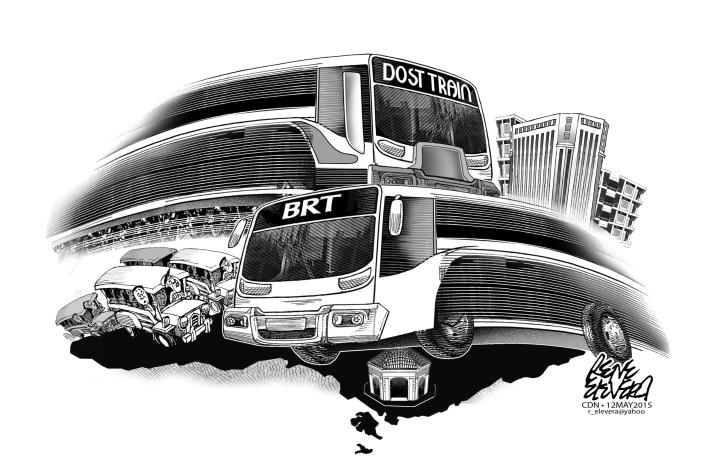
It’s something to look forward to — a hybrid road train in Cebu City offers the promise of non-fossil fuel public transportation.
Under an agreement between the Cebu City government and the Department of Science and Technology (DOST), the prototype will be ready to ply selected routes next year.
The invention looks like five buses linked together, running on a combination of electric power and diesel fuel.
Aside from the fact that it reduces air pollution, what makes this a welcome development is that it will traverse routes that won’t be serviced by the Bus Rapid Transit (BRT) system or the proposed bus system of SM that will service customers from assigned terminals to the South Road Properties (SRP), where its Seaside Complex will open in the last quarter this year.
We’re slowly catching up with the rest of the world in making choices for sustainable growth.
After one train, maybe hybrid cars would be more readily available in the market.
Cebu City Mayor Michael Rama was right when he said Cebu City or for that matter Metro Cebu doesn’t need Manila’s overpriced, high maintenance, heavily subsidized and mammoth Light Railway Transit (LRT) system to meet our growing transport needs.
Since the hybrid road train doesn’t need cables and metal tracks, it won’t disrupt the existing road network or destroy landmarks of which Cebu City has plenty of.
According to the DOST, the hybrid electric train can accommodate 180 passengers.
It runs at 50 kilometers per hour but tests showed it can reach speeds of 69 kilometers and make a turning radius of 15 meters.
While environmental advocates insist on developing solar and other renewable energy sources, the e-train’s dual system will do for now.
By itself, it would show the public a concrete alternative for public transportation.
It’s important that people see day-to-day examples of something better than the dilapidated jeepneys that rule the streets.
The BRT, which will take shape by 2016 yet, would serve only selected routes in Cebu City. This means traffic congestion in the urban core will not see dramatic improvement with the BRT alone.
Consultants of the Japan International Cooperation Agency (JICA) said Metro Cebu needs both the BRT and a train system to cover the growing needs of a Mega Cebu.
So it’s good to hear that the DOST’s e-train will explore a route from P. del Rosario Sreet going to Mandaue City, all the way to the Mactan Cebu International Airport.
We welcome the initiative of the national government agency to apply appropriate home-grown technology to the urban challenges of Cebu.
Our neighbors in Asia have gotten far ahead of us.
It’s about time we start catching up.